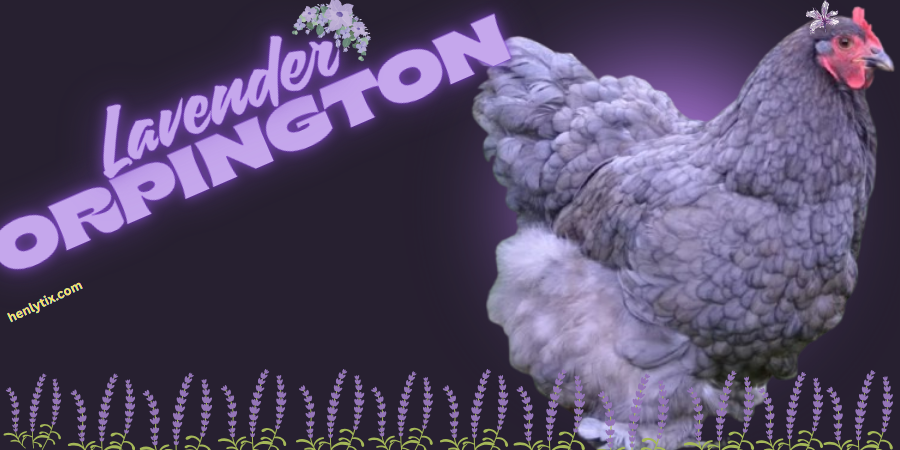When I first decided to add some new breeds to my backyard flock, I knew I wanted something truly special. After some careful research, I stumbled upon the Lavender Orpington and instantly became fascinated. Their gorgeous plumage, a soft lavender color with a purple sheen, makes them a standout among other chickens.
Unlike the typical chicken breeds, the Lavender Orpington stands out not only for its beauty but also for its docile nature. It’s no wonder they’re often on top of the top picks for newcomers to chicken keeping.
What makes them even more appealing is their temperament. These chickens are calm, gentle, and very friendly, making them ideal for families with young children. The Lavender Orpington is a breed that’s known for being easy to care for and not just a beautiful pet but also a productive layer.

With an impressive yearly production of around 220 medium brown eggs, these birds are both lovely and efficient, making them a perfect fit for anyone looking to add a new member to their backyard flock.
One of the things I found particularly appealing about the Lavender Orpington is its hardiness. Whether it’s cold or heat, these chickens are built to thrive in a variety of conditions. Their fluffy feathers and cold-hardy nature help them stay toasty warm during the frigid weather.
Lavender Orpington – Short Answer
Lavender Orpingtons are a beautiful, docile, and friendly breed known for their lavender-colored plumage and gentle temperament. They are good layers, producing 200-280 eggs a year. These hardy hens thrive in cooler climates and are great for beginners, especially for families with young children. Despite their large size, they are easy to manage, though they may require extra space to avoid obesity and leg injuries. While they don’t lay purple eggs, their medium to large light brown eggs are still a valuable addition to any backyard flock.
With their large breed size and upright stance, they’re a sight to behold in any coop. Their medium-sized single comb and overall sturdy build make them well-suited for any backyard environment.
I’ve found that these chickens are not just a pretty sight but are also known for their unique personalities. They’re not only loveable and cuddle-worthy with loose-knit feathers but also incredibly calm around other birds and people.
Whether you’re looking for a bird with great egg production or one that will charm you with its remarkable and unique qualities, the Lavender Orpington is the perfect choice. This designer Orpington is a rare find and not easy to replicate, making it a highly sought-after breed.
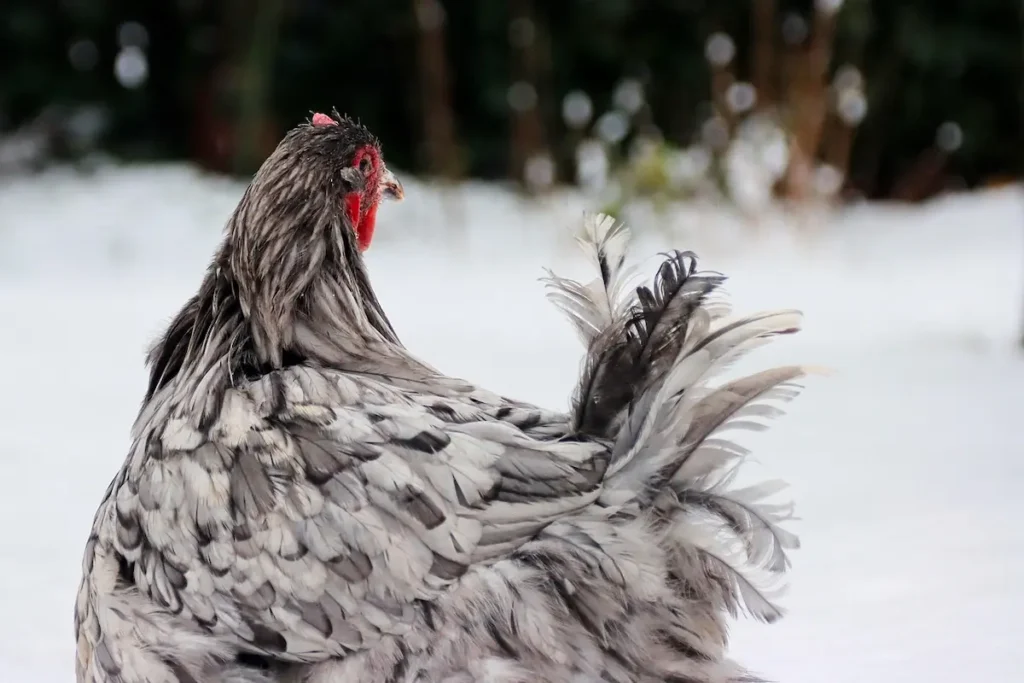
Lastly, the Lavender Orpington stands out for its quirky purple plumage and desirable qualities. The breed is truly one of a kind and adds a touch of elegance to any backyard. While still hard to find and rare, their self-blue color and blue chickens traits make them even more intriguing.
Despite their rarity, their ability to breed true and produce offspring with the same Lavender color adds to their uniqueness. These traits make them a great option for both poultry pets and breeders who are looking for something different.
My Experience With Orpingtons in My Flock
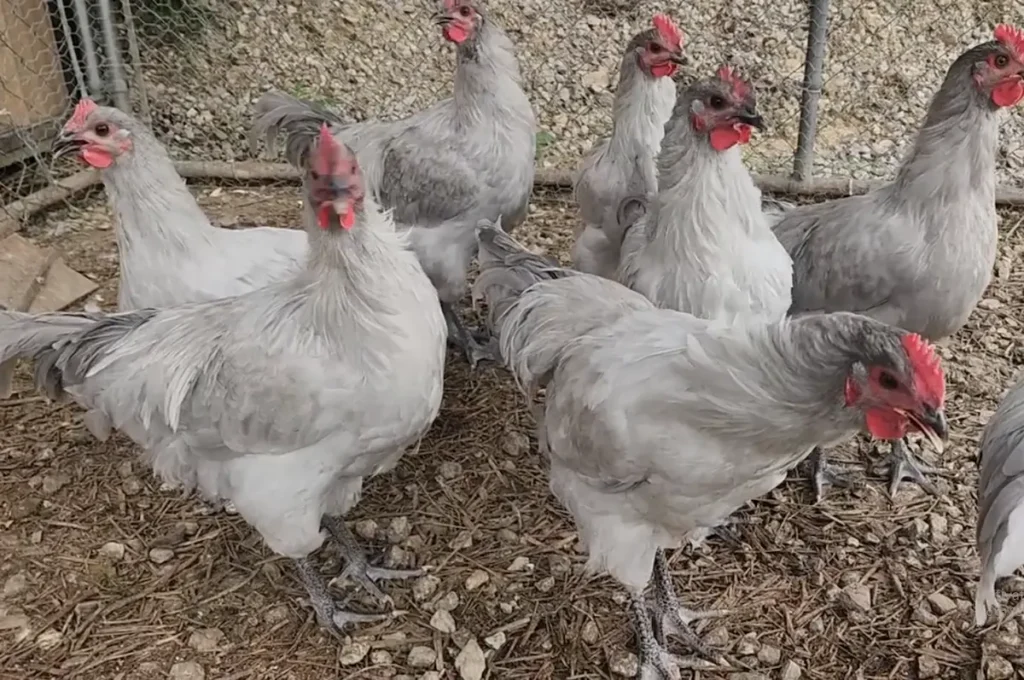
I’ve had the pleasure of raising Lavender Orpingtons in my flock, and they’ve quickly become some of my favorites. They’re gentle with their flock mates and don’t get involved in the pecking order, which helps maintain peace in the group. Unlike some breeds, these chickens prefer to stick together rather than fight for the top position.
Their feathers are soft and poofy, and though they look big and heavy, they’re surprisingly not as cumbersome as they appear. I’ve noticed they also accept others easily into their group, which adds to their charm.
One of the things I appreciate most about them is their gentleness. They’re not noisy or overly vocal, making them a great choice if you prefer a calmer flock. They lay light brown eggs consistently, producing about 170-200 eggs/year, which is a reliable amount for any backyard chicken keeper.
So far, I haven’t had to deal with much broodiness, and they’ve been easy to manage in terms of broodiness. Overall, these Lavender Orpingtons have proven to be a wonderful addition to my flock.
Delve into the charming world of Faverolle Chickens and discover valuable insights that every chicken keeper will appreciate.
History and Origin of the Lavender Orpington
The story of Orpington chickens begins in the 1800s when they were first bred by William Cook in England. Cook aimed to create a dual-purpose bird, perfect for both egg layers and meat birds for the dinner table. He succeeded, and soon after, Orpington chickens became an instant hit at poultry shows, eventually spreading to other countries. The breed quickly grew to include several colors, including black-colored Orpington, white, buff, and even red.

However, as the years passed, especially during the mid-20th century, the popularity of Orpingtons began to decline due to the rise of large-scale poultry farms. Many breeds, including Orpingtons, were placed on the threatened breed list. Thankfully, over the last 30 years, there has been a resurgence in their popularity, particularly with the introduction of the Lavender Orpington in the late 1990s.
This new color was the result of careful breeding, and now, Lavender Orpingtons are gaining popularity as a beautiful show breed and are known for their ability to breed true, producing Lavender babies.
The Lavender Orpington is a relatively recent addition to the long history of Orpington chickens. Although the breed was originally developed in the UK in the 1800s by William Cook, the Lavender Orpington itself came much later, thanks to the efforts of Priscilla Middleton in the 1990s.
She worked diligently, putting in years of effort to fine-tune the lavender coloration of the birds, creating a new and pretty version of the Orpington. The result is a stunning bird with purple poultry hues, and today, these respected breeders are still ruffling feathers in the chicken world with this gorgeous breed.
If you’re interested in a breed that combines beauty and functionality, the Barnevelder is definitely worth considering.
What Do Lavender Orpington Look Like?
Lavender Orpingtons have a distinct appearance that sets them apart from other chicken breeds. They have a broad back, stubby tail, and slate-colored legs that give them a sturdy and strong build. Their feathers have a light purple tinge with a silvery-lilac tint, making them truly unique. Their dense plumage and loose-knit feathers add to their full, fluffy look.
If you’re looking for a bearded chicken that’s also known for its muffed legs, the Salmon Faverolle is a standout choice for any backyard flock.
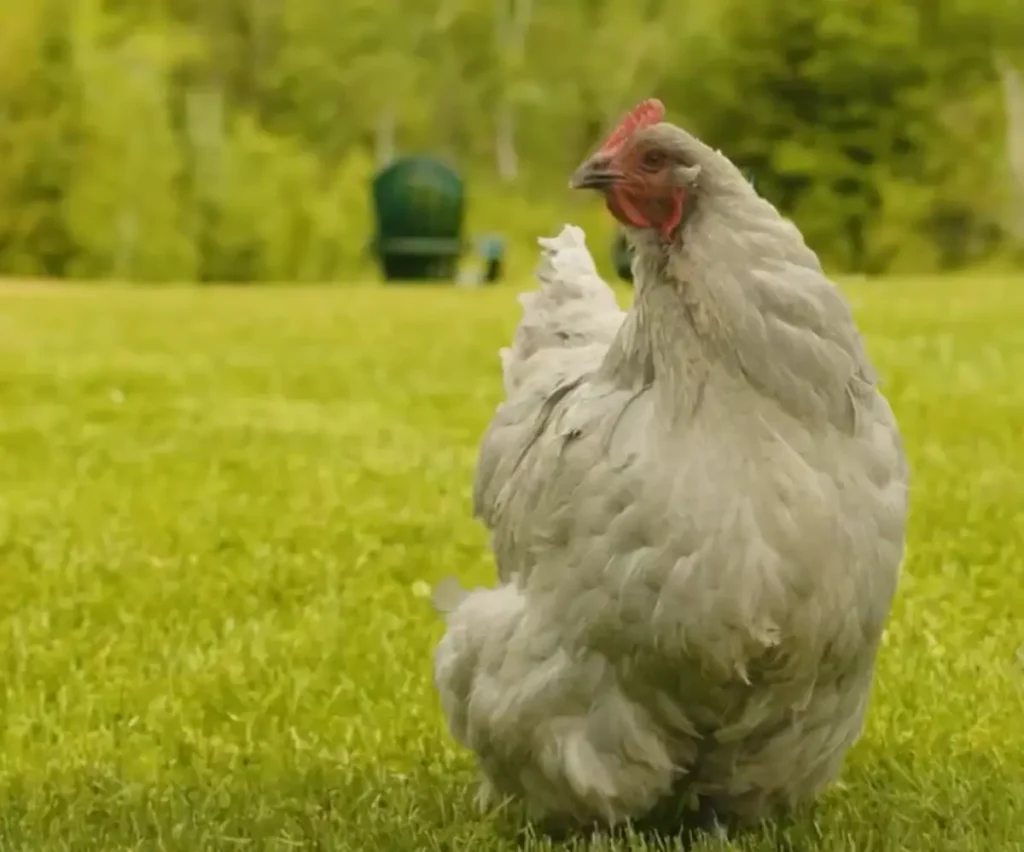
These chickens are often described as looking like they’ve just used a purple toner shampoo, thanks to their beautiful light lavender feathers. Their bright red comb, red wattles, and red earlobes stand out against their soft lavender feathering, giving them a colorful contrast.
Despite their large size, Lavender Orpingtons are close to the ground, which makes them appear grounded and solid. They have bay-red eyes that add a touch of beauty to their gentle appearance.
The birds are not overly flashy, but their pretty and sturdy-looking structure make them stand out in any show. Their five-pointed comb and dark horn-colored beaks complete their look, making them an excellent choice for anyone interested in raising roosters or even learning how to tame a rooster.
Lavender Orpington Bantams
Lavender Orpington bantams are a rare gem, especially in the US, making them a great option for chicken keepers with smaller backyards. These bantams are much smaller than the standard-sized Orpington, weighing only 34 – 38 ounces. Despite their small size, they share all the wonderful qualities of a regular lavender Orpington, including that teeny lavender powder puff look that makes them irresistible to photograph.
Although their egg yield is slightly lower, producing just under 200 smaller eggs, they are still a beautiful and practical choice for those looking to add some charm to their backyard flock.
How Big are Lavender Orpington?
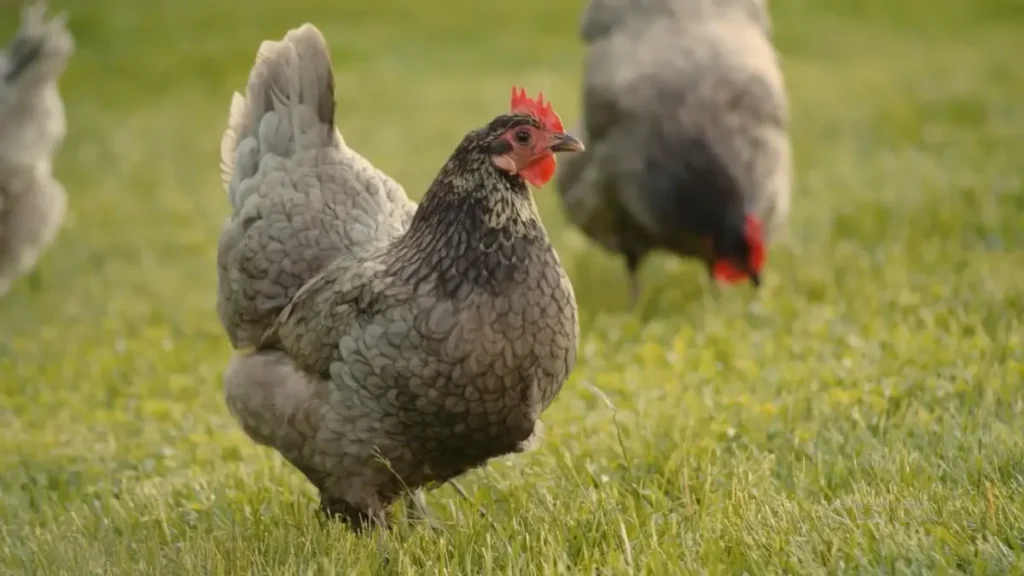
Lavender Orpingtons are a large breed, with hens typically weighing around 8 lbs as adults and 7 lbs as pullets. Roosters are even bigger, usually reaching 10 lbs as adults and 8.5 lbs as cockerels. These chickens may appear heavier due to their purple plumage, but their large size is still impressive. Whether you have ladies or gents, the Lavender Orpingtons are a solid, sturdy breed with a nice heft to them.
Are Lavender Orpington Beginner-Friendly?
Lavender Orpingtons are a great choice for beginner chicken keepers. They are low maintenance and known for their gentle temperament, making them big softies that are easy to handle. Despite being a rare and unique breed, they are suitable for new owners, especially if sourced from a reputable breeder.

However, it is important to ensure the chicks don’t come from poor bloodlines, as this could lead to feathering issues or other complications. With the right care, they grow into healthy, brilliant birds with the fancy couture coloring that makes them a standout in any flock, and their productivity matches other Orpington varieties.
Breed Standards and Varieties of Orpington
Breeding Lavender Orpington
Breeding Lavender Orpingtons is not an easy task, as it requires some skill and knowledge of genetics. The lavender gene is recessive, meaning both parents must carry it to produce a baby Lavender Orpington. Even with the right parents, the fertility rate can be unpredictable, sitting between 65-80%, according to Cackle Hatchery. This is one of the reasons why breeding these beautiful birds is often best left to experienced breeders or experts in the field.
When breeding Lavender Orpingtons, it’s also important to watch out for a mutation associated with the lavender gene, commonly known as the shredder gene or tail shredder gene. This mutation causes abnormal feather development, where the barbs on the feathers fail to interlock, leaving the feathers looking as if they’ve been through a paper shredder. This can affect the bird’s insulation and function, as the feathers don’t provide the protection they should.
To avoid such issues, many breeders cross Lavender Orpingtons with other Orpington varieties, like black Orpingtons, to maintain their health and improve characteristics. The offspring from this cross will carry the lavender gene and can produce pure lavender birds when crossed back to a pure lavender Orpington.
With 12 varieties of Orpingtons, including Buff, Spangled, White, and Chocolate, there are many options for creating stunning crosses while keeping the lavender color intact.
Varieties of Orpington
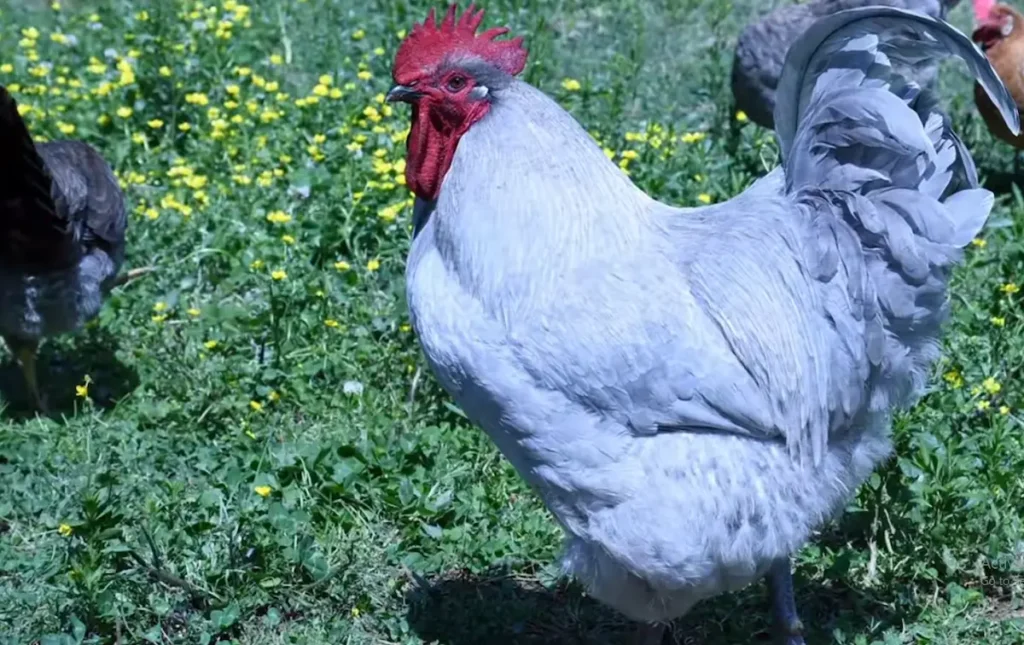
The Orpington breed has 12 varieties, each with its own unique characteristics. The most common color is Buff, known for its popularity among chicken keepers. However, some of the rarest varieties include the lavender Orpington and Spangled, which stand out for their beauty and distinct coloring.
While lavender Orpingtons are a bit more challenging to find, they are highly sought after for their unique, soft hue and gentle temperament.
Other notable Orpington varieties include White, Birchen, Chocolate, Cuckoo, Gold Laced, and Jubilee. These variations provide plenty of choices for anyone looking to add a variety of stunning chickens to their poultry family.
If you can’t find a lavender Orpington, you still have the option of exploring these other beautiful colors that can happily cohabit in your backyard, offering a perfect pick-n-mix poultry experience.
The less common varieties like Lemon Cuckoo, Partridge, and Red Orpingtons add even more diversity to the breed. Whether you’re after a traditional look or a unique splash of color, the Orpington breed has something for everyone, making it an excellent choice for chicken keepers of all levels.
When choosing between different breeds, the silkie rooster stands out due to its unique feathering and friendly nature.
Lavender Orpington Eggs

Lavender Orpingtons are known for being good layers of large eggs, which are typically pale brown or sometimes have a light brown hue. These eggs can sometimes have a pinky color with a matt bloom that gives them a fresh, just-picked look, similar to a freshly-picked plum.
Despite their beautiful lavender appearance, Lavender Orpingtons do not lay purple eggs, which is a common misconception. Instead, their eggs are a bit more typical in color, but still quite beautiful.
For those interested in purple eggs, it’s important to know that Marans and the Chilean Tinamou are better known for laying eggs with a burgundy tinted or even a shiny purple appearance.
Barnevelder chickens are known for their chocolate brown eggs, which are a sought-after feature among poultry keepers.
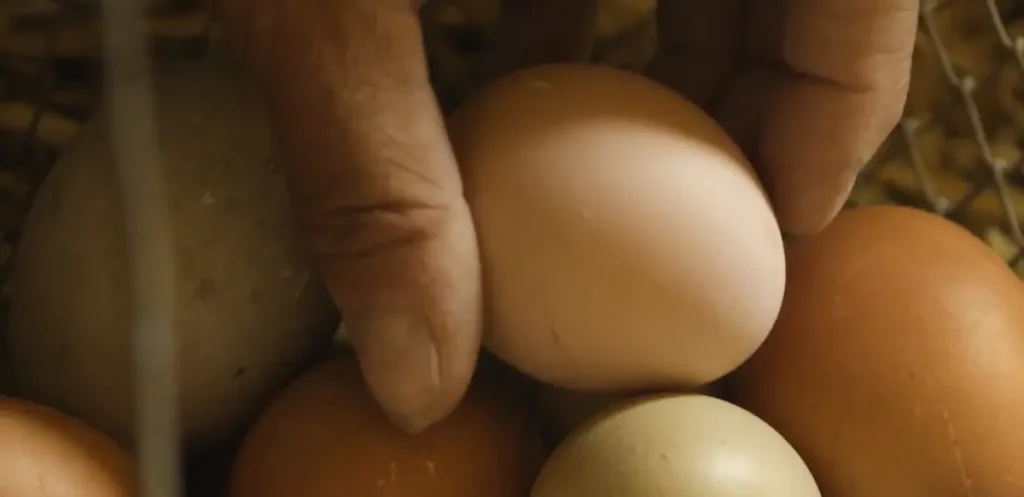
While Lavender Orpingtons don’t lay eggs like this, their eggs remain a stunning example of a chicken’s natural beauty, even without the amazing purple eggs often attributed to other breeds. Still, these eggs are perfect for any hen keeper looking for reliable production and unique egg colors.
The Jersey Giant is a dual-purpose breed, ideal for both meat and egg production.
How Many Eggs Do Lavender Orpingtons Lay?
Lavender Orpington hens are reliable egg layers, producing 3-4 eggs a week, which adds up to about 200-280 eggs a year. They typically start laying eggs at around 5 to 7 months of age, and once they begin, they rarely stop. These hens can lay all year, as they are not bothered by cold weather. However, be mindful of broodiness, as it can sometimes affect their egg production.
How Much Space Do Lavender Orpington Chickens Need?
Lavender Orpingtons need adequate space to stay healthy and active. In a run, they should have 8 to 10 square feet per bird to ensure they get enough exercise and motivation to forage.
Since they don’t fly, smaller fences are enough to keep them in, but they may not protect against predators. In the coop, allow around 4-5 square feet per hen to avoid them getting cramped, especially in warmer conditions, as their fluffy jackets can make them overheat. For roost heights, keep them low to prevent injury, and make sure each chicken has at least 1.5 feet to ensure comfort.
Are Lavender Orpington Cold Hardy?
Lavender Orpingtons are well-suited for cooler climates and colder weather due to their natural resilience in lower temperatures. They are perfect for areas that experience cold winters. However, while they handle the cold well, they can overheat on warmer days, so it’s important to provide them with enough space, shade, and access to water to keep them comfortable during hotter months. These birds thrive in a balance of cold conditions and adequate space to avoid overheating.
Lavender Orpington Health Issues
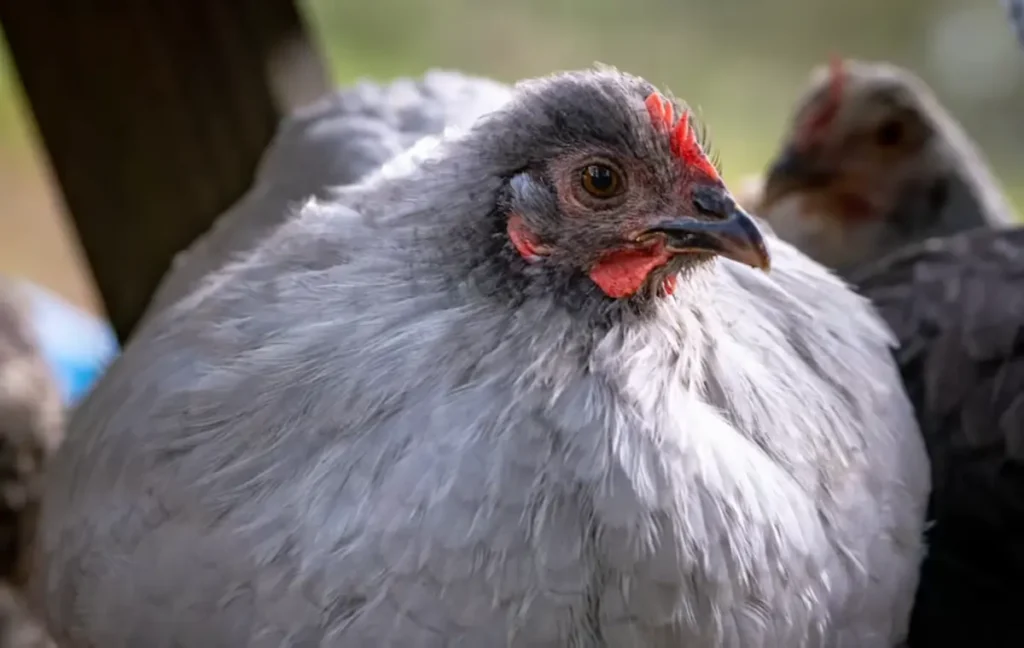
Lavender Orpingtons are generally hardy hens, but like any breed, they can have their health issues. One of the main concerns is obesity, as these heavy chickens can be lazy and prone to gaining weight if not properly managed.
It’s important to monitor their waistlines and provide enough space for exercise. Additionally, their weight makes them prone to leg injuries, especially if their coop entrances or perches are too high. These factors can lead to unnecessary stress on their bodies, so it’s essential to ensure they have a comfortable, well-managed environment.
Frequently Asked Questions
What color eggs do lavender Orpingtons lay?
Lavender Orpington chickens typically lay light brown eggs, though the color can vary slightly in shade. Sometimes, the eggs may even appear with a pinkish or tan tint. These eggs are usually medium to large in size, produced at a moderate rate of around 170-200 eggs per year. However, some Lavender Orpingtons may produce a higher output, with some hens laying as many as 200-280 eggs annually.
Do lavender Orpingtons lay well?
Lavender Orpingtons are generally considered good layers, producing about 170-200 medium-sized eggs per year. These eggs are often light brown or pink-tinted, making them a unique addition to your egg collection. While they are a moderate to heavy laying breed, they tend to start laying later than other breeds, usually around 24 weeks of age. Despite this, they are still well-suited for meeting a family’s egg needs.
What is special about lavender Orpington?
Lavender Orpingtons are a large, friendly breed known for their striking beauty and wonderful temperament. They have a calm and docile nature, making them a perfect choice for backyard flocks and families with children.
Their gentle disposition and impressive appearance make them stand out among other chicken breeds, which is why they’re often favored by chicken keepers. Their friendly nature ensures they fit in well with other birds and people alike, adding both charm and practicality to any flock.
What color Orpington is most popular?
The buff Orpington is the most popular and easiest to source variety of Orpington, thanks to its high demand. However, due to this popularity, buff Orpingtons are often overbred, which can sometimes lead to a lack of quality in the birds.
While lavender, red, splash, and spangled Orpingtons are also recognized varieties, they are not as widely available or as in-demand as the buff. Despite their lower popularity, these unrecognized varieties still have their own unique appeal.
Conclusion
Lavender Orpingtons are an excellent choice for both new and experienced chicken keepers due to their stunning appearance, gentle temperament, and reliable egg production. They thrive in cooler climates, are easy to care for, and offer both beauty and efficiency with their light brown eggs. Although they are a bit larger and may face issues like obesity or leg injuries due to their size, these birds are known for their hardiness and friendly nature. With the right care, space, and attention, Lavender Orpingtons make a wonderful addition to any backyard flock.

